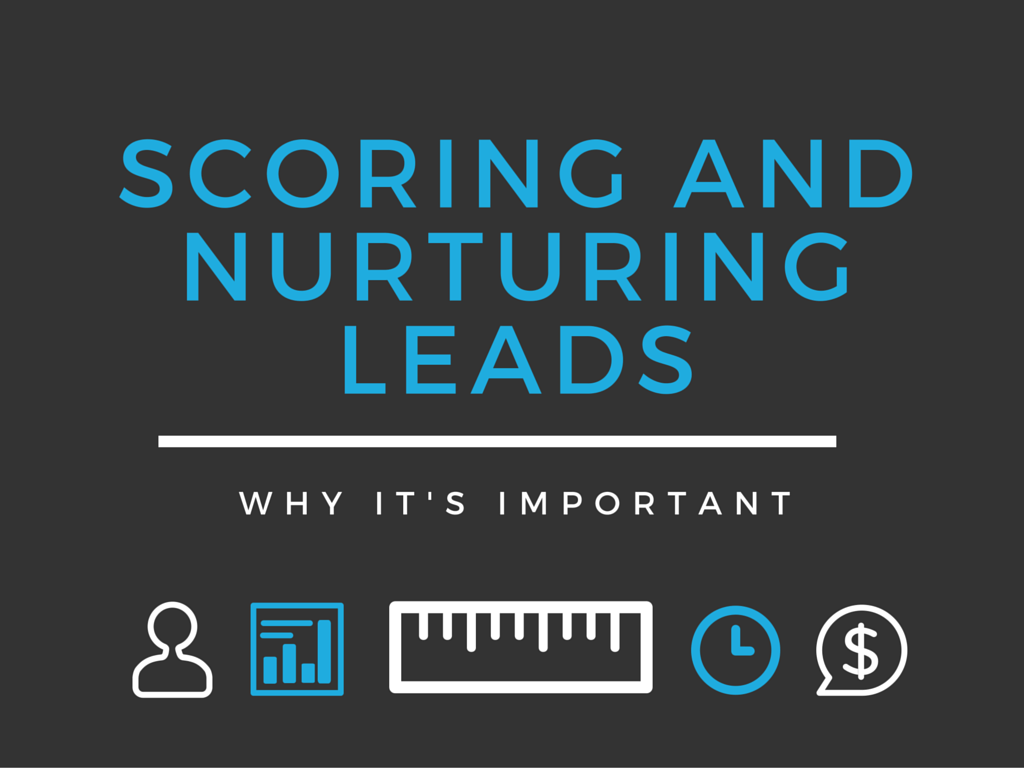- May 11, 2016
- By Gina Yeagley
- In Marketing Strategy and Planning
From Marketing to Sales Qualified: The Importance of Lead Scoring and Nurturing

The buyer’s journey is a popular phrase in marketing offices all over the world, but it’s more than just a trendy buzzword. When you break it down, the phrase tells you everything you need to know about customers. Each buyer is different, and each buyer takes their own path from lead to eventual customer.
As a marketer, it’s your duty to figure out what the buyer’s journey means to your marketing and sales teams. Which leads are considered marketing qualified leads, and which are considered sales qualified leads? How can marketing create better content to pull in a more interested audience? When does sales make the first phone call?
It’s critical that you understand the entire buyer’s journey and how your company’s actions play into moving customers down the funnel. With that in mind, we’ve compiled a guide that can help your marketing and sales teams decide how they fit into the buyer’s journey, giving your company the insights needed to boost lead to customer conversion rates.
Capturing and Scoring Leads with CRM Software
Before you can ever hope to convert leads into customers, you first have to come up with a way to capture and record the contact information of your website visitors. A landing page is the perfect tool to accomplish that. No matter how visitors find your company’s website, a landing page gating a useful resource is one of the best ways to collect information from interested prospects.
Once you’ve captured some leads, you then need a resource to organize your new-found information. Customer relationship management (CRM) software like Hubspot's CRM not only stores pertinent information about your leads, but it tracks all future activity from those leads on your site. CRM software records how often people open your emails, how much time they spend on your site, which pages they visit the most and much more.
Gathering this information allows your CRM software to do its best trick: lead scoring. Your software considers all of the actions taken by your leads, then ranks these individuals based on how motivated or interested they are (by downloading multiple resources, re-visiting web pages, opening all of your emails, etc.). However, it’s up to marketing to determine and program the lead scoring guidelines into the CRM.
Dual Definitions for Qualified Leads
Leads with high scores are the ones who deserve your strongest marketing push. However, that doesn’t necessarily mean you should start asking them about making a purchase right away. There’s a major difference between being marketing-ready and being sales-ready. And since sales and marketing are two distinct entities within your company, you need separate definitions for what constitutes a lead for both sales and marketing.
A marketing qualified lead is someone who has demonstrated themselves to be worthy of marketing's time and attention. Again, they might not be ready to buy right this second, but they’ve downloaded your white papers and they’re interested in your free demo. The particulars of what makes a prospect a marketing qualified lead will vary; your CRM can help you figure out who’s ready for the next step.
Sales qualified leads, on the other hand, have higher standards to live up to. A lead that’s sales qualified is ready to talk one-on-one with salespeople about how a certain product or service can solve their challenges. As is the case with marketing qualified leads, CRM software is very helpful in determining which leads are ready to enter the sales process.
Another helpful aid is a service level agreement (SLA) between sales and marketing. Though sales and marketing often have a famously acrimonious relationship, it’s time to put the ill will aside and encourage these two groups to work together. Joining forces and collaborating on the definitions of the two types of lead qualification will help both sales and marketing become better at their jobs. Furthermore, it’ll help establish the trust that’s necessary for a harmonious relationship between sales and marketing, which will ultimately result in a better customer experience.
Lead Nurturing Tactics for Marketing
Just as there are separate parameters for lead qualification, there are also different tactics that must be employed by sales and marketing teams to achieve company goals. It’s the job of the marketing team to whet the appetite of the lead until they get to the point that they’re ready to consider making a purchase.
Tools used by marketing for lead nurturing include:
- Lead Generation: Marketing must drive traffic to the landing pages on your site. Social media, SEO, paid search and offline marketing are all allies of the marketing team. From there, marketing has to ensure that landing pages are customized for the right audience and that those pages clearly communicate the benefits leads will receive for signing up. Lastly, the customer intake form must contain all of the necessary information (i.e. name, email, company name, biggest challenge, etc) for further lead nurturing.
- Action-Based Nurturing: When a lead downloads your ebook or signs up for a webinar, you know you’ve got interest. Make the most of that opportunity by sharing additional resources through email or social media.
- Warming Up Cooled Leads: Sometimes leads seem very interested and then fall off the grid. If someone downloads content from your site and doesn’t contact you after a set period of time, try to re-engage that lead through interesting emails that contain bonus content. After all, if they showed interest once, they very well could show that same interest in the future.
- Tracking: Take note of those leads that consistently voice their opinions by clicking the links in your emails and interact with your social media posts. These are the customers you’ll most likely be sending over to the sales team.
Lead Nurturing Tactics for Sales
When sales receives leads from marketing, they should have complete confidence that these leads are ready for the next step. However, the sales team still has some work to do before leads are truly ready to take the plunge and make a purchase. Here are some ways your sales team can nurture sales qualified leads:
- Personalized Email: Your CRM software tracks every interaction your leads have with your company. Use that information and speak to these prospects directly. Reference pain points they may have mentioned (or that have been inferred through their activity).
- Phone Conversations: If your email interactions go well, it’s time to move things forward with a one-on-one phone discussion. This is another great time to discuss the pain points the lead has brought up. Remember to clearly show how your solution can resolve those issues for your leads.
- Ask for the Sale: Since your products and services help leads alleviate challenges and address pain points, get straight to the point and encourage leads to really consider doing business with you.
- Sales Process: Every company has their own unique sales process. Go through the normal channels, but don’t be afraid to make improvements to enhance efficiency and effectiveness.
- Marketing Materials: You may be able to use content, videos and podcasts from your marketing team to help encourage your leads to make a purchase. Be sure to understand how to access these materials before reaching out to your leads. Work with marketing to develop resources that will help convert hot leads into customers.
Nurture the Buyer Through Their Journey
Without lead scoring and nurturing guidelines clearly laid out for your marketing and sales teams, it’s not easy to keep up with leads throughout the buyer’s journey. Avoid losing valuable prospects by taking advantage of the tools and techniques — a CRM, lead scoring, lead nurturing — available today. Not only will your company experience an increase in communication with the prospects that count, but your interested customers will feel like you’re a company that cares. And when leads have a great experience with your business, the more likely they are to make repeat purchases and recommend your company to others.





